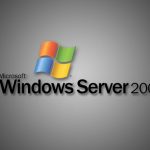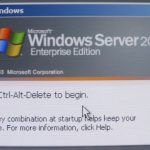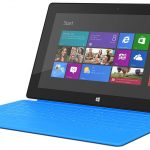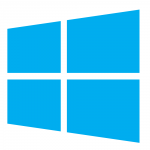Microsoft Q1 FY2017 by the numbers: $22.34 billion revenue, $5.98 billion profit

Microsoft has posted its earnings for Q1 FY2017 (Q3 CY2016), revealing revenue of $22.34 billion, operating income of $7.1 billion, net income of $5.98 billion, and earnings per share of $0.76 cents. The software giant beat analyst expectations of $21.71 billion in revenue and EPS of $0.68. The stock is up around 5.5 percent over yesterday, with shares trading at over $60 -- a record value for the company.
How do the latest numbers compare to Q1 FY2016? A year ago Microsoft reported revenue of $21.66 billion, operating income of $7.07 billion, net income of $5.66 billion and EPS of $0.70. So the revenue, operating income, net income, and EPS are up.
Microsoft creates Secure Boot backdoor, leaks golden keys

Microsoft has created a backdoor in Secure Boot, the security feature designed to ensure that a device can only run the operating system that it is meant to. And, to make matters worse, it has just accidentally leaked the "golden keys" needed to bypass it.
The Secure Boot backdoor is there to, for instance, allow a Microsoft developer to install a new build of Windows on a device -- that has the security feature enforced -- without it having to be digitally signed beforehand. It makes their job easy, but it also makes the security system ineffective if -- when -- the golden keys that unlock it make their way into the wrong hands.
Microsoft celebrates the 20th anniversary of Windows Server

With strange serendipitous timing, just as the free upgrade period for Windows 10 is coming to an end, Microsoft is also celebrating the 20th anniversary of Windows Server. Way back in 1996, the company unleashed Windows NT 4.0 Server onto an unsuspecting world. The rest, as they say, is history.
Described as the operating system that would 'knock the socks of Unix' Windows NT 4.0 Server stuck around for four years before being replaced by the enterprise-specific Windows 2000 Server. With laughably low system requirements -- 133 MHz CPU, 32 MB RAM and 1 GB of disk space -- this was the start of a journey incorporating centralization and security.
Windows 10 RSAT and Windows Server 2016 Technical Preview 3 coming this month

Microsoft's Gabe Aul has revealed that the company plans to release a new technical preview of Windows Server 2016 later this month. Responding to questions on Twitter, the company's Corporate Vice President and face of the Windows Insider program also said that Windows 10 RSAT will be launched in August.
Unlike the preview builds of Windows 10, previews of the latest edition of Windows Server have been slower to creep out of Redmond. Sysadmins will be keen to get their hands on the latest builds to see just what direction Microsoft is taking with its server software after the decision to delay the launch.
Google Cloud Platform gains Windows Server support

For a long time, Google Cloud Platform has been a Linux-only affair. Now that has changed. Recognizing that many of its customers work in mixed platform environments, Google has added Windows Server support into the mix.
Specifically, Windows Server 2008 R2 and Windows Server 2012 R2 are now supported, after seven months of beta support. During the beta period, Google made a number of Windows-specific tweaks to the Compute Engine virtualization stack.
Don't put your business at risk by continuing to use Windows Server 2003

One constant in the technology industry is that technology continues to evolve at a rate that many find it difficult to keep up with. Microsoft, for example, is currently busy promoting the launch of its latest desktop operating system (OS) -- Windows 10 -- that will be available from July 29 in 190 markets around the world. The company’s expectations are high, with it professing a goal of putting Windows 10 on a billion devices within two to three years.
As with its desktop OS, Microsoft’s Server solutions are also at a turning point, with countless businesses around the world facing up to the stark reality that as one server version comes into being; support for another one will drop by the wayside; now it’s the turn of Windows Server 2003. But managing any migration is not for the faint hearted.
Windows Server 2003 still used on many servers, despite approaching end-of-support

A large number of organizations are continuing to use Windows Server 2003, despite Microsoft announcing that support for the operating system will cease in less than a month.
According to a recent study by Softchoice, 21 percent of servers were still operating the OS in the first half of 2015, a fall of 11 percent compared with the same period twelve months ago.
DH2i launches first container management solution for Windows Server

Containerization of applications has done much to enhance the flexibility and portability of software as it makes it easy to move between in-house, private cloud and public cloud.
Until now, however, it's been restricted to Linux systems, using solutions like Docker, or Oracle servers running Multitenant. Now though containerization is coming to Windows servers as DH2i launches its DxEnterprise container management solution for Windows Server.
Why is Dell crippling its low end server RAID cards?

When scoping out new servers for customers, we usually look towards Dell, as their boxes have the right mix of price, performance, expandability, and quality that we strive for. RAID card options these days are fairly plentiful, with our sweet spot usually ending up on the PERC H700 series cards that Dell preinstalls with its midrange to higher end PowerEdge server offerings.
But recently we were forced into using one of its lower end RAID cards, the H200 PCIe offering. This internal card was one of the few dedicated RAID options certified to work in a refurbished server we had to put back into production, a Dell R210 1u rack unit. The specs looked fine and dandy in nearly all respects, except for one area that I like to avoid: the lack of dedicated battery backed flash cache.
Migrating from Windows Server 2003: 12 best practices straight from the trenches

Most of us have hopefully managed to get off the sinking ship that was Windows XP. As much of a recent memory as that has become, a new end of life is rearing its head, and it's approaching fervently for those who haven't started planning for it. Microsoft's Windows Server 2003, a solid server operating system that's now about eleven and a half years old, is heading for complete extinction in just under 300 days. Microsoft has a fashionable countdown timer already ticking.
Seeing as we just finished our second server migration in a single week (a personal record so far), sharing some of the finer aspects of how we are streamlining these transitions seems like a timely fit. This braindump of sorts is a collection of best practices that we are routinely following for our own customers, and they seem to be serving us well so far.
Microsoft's Q4 FY2014 earnings by the numbers

Microsoft has released its earnings results for the fourth fiscal quarter of the year (that is Q2 CY2014), posting revenue of $23.38 billion, gross margin of 15.79 billion and operating income of $6.48 billion. As a result, earnings per share (EPS) came in at $0.55 (below analyst expectations of $0.60).
Revenue, gross margin and operating income are higher than a year before, when they reached 19.89 billion, 14.29 billion and 6.07 billion, respectively. However, EPS is lower, dropping from $0.59. "We are galvanized around our core as a productivity and platform company for the mobile-first and cloud-first world, and we are driving growth with disciplined decisions, bold innovation, and focused execution", says Microsoft CEO Satya Nadella. "I'm proud that our aggressive move to the cloud is paying off -- our commercial cloud revenue doubled again this year to a $4.4 billion annual run rate".
How we did it: A desk-less workforce built on Surface tablets and Windows RDS

One of the biggest problems I have with all those fancy iPad rollouts in corporate America is that they are merely patching a larger problem instead of solving it. Let's face it, nearly 60 percent of tablet buyers currently are not replacing their primary mobile devices -- they're merely supplementing them. Less than 9 percent truly see themselves replacing their laptops with tablets. If tablets are the future of mobile computing, there is a serious problem with their perception by non-consumption driven buyers.
When one of my customers approached us about helping them migrate an aging, near-crippled fleet of netbooks into modern tablets, I knew there had to be a better way than the "iPad standard". We initially toyed with the idea of getting tablets to use in conjunction with GoToMyPC or LogMeIn, but the recurring costs on such an approach started to balloon. Plus, a workforce that lives and dies by the full Microsoft Office suite would never adjust to a touch-only future.
Microsoft reorganization is long overdue

Today, over at all AllThingsD, Kara Swisher reports that a major Microsoft makeover is imminent. Reorganization is bloody well overdue, and timing makes sense. The company's fiscal year closes June 30, and the final quarter is when employees, product groups and future plans are evaluated and rewarded and when internal changes occur.
I strongly expect the new structure to mesh with CEO Steve Ballmer's mandate Microsoft is now a "devices and services" company. His larger challenge is surmountable: Enabling a stronger siloed Microsoft that disables a power structure that resembles "A Game of Thrones" -- too many fiefdoms fighting cross-purposes to the kingdom Bill Gates created. Under the current structure, Ballmer deals with only five kingdoms, rather than book and HBO series' seven.
Microsoft Q3 2013 by the numbers: $20.49B revenue, 72 cents EPS

Today, after the closing bell, Microsoft revealed what might be the closest-watched quarterly results in 11 years. Fiscal third quarter, like the one in 2002, marks a time of record-low PC shipments, with blame falling on the newest operating system. In recent weeks, every idiot arm-chair pundit imaginable has taken to the web to proclaim Windows 8 a failure and prophesying Microsoft's doom. Not so fast. This company is still a money machine.
For fiscal Q3, ended March 31, Microsoft revenue reached $20.49 billion. Operating income: $7.61 billion and net income was $6.06 billion, or 72 cents a share.
The next Windows won't be called Blue

Microsoft knows something about cool codenames, but little on how to name actual products. Whistler, Longhorn, Cougar, Blackcomb, Vienna and even Blue all sound great, resounding and promising, but that impression goes away fast when Microsoft baptizes its creations: XP, Vista or 7. The guy with the cool names went on a bathroom break, and all the boring suits took over.
That's the very same impression I get after reading about Microsoft's "Looking Back and Springing Ahead" blog post, which touts a number of apparently impressive achievements and future plans that the company has. Lo and behold, there's even a strategy in place to raise the pace for "updates and innovations" -- that's the "new normal across Microsoft", according to the company. But then I notice the Windows Blue reference.
Recent Headlines
Most Commented Stories
© 1998-2024 BetaNews, Inc. All Rights Reserved. Privacy Policy - Cookie Policy.